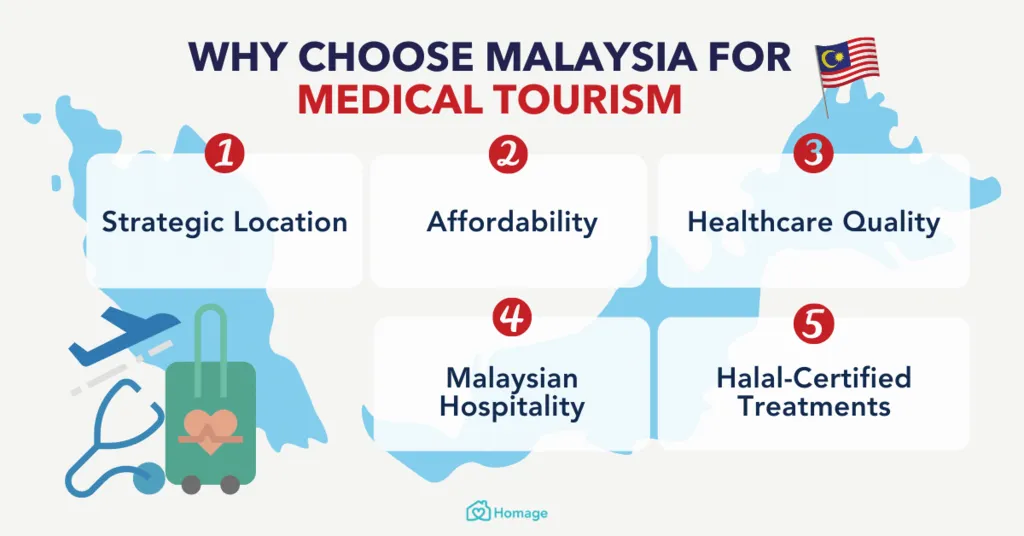Malaysia is fast becoming a global hub for medical tourism. The Malaysia medical tourism market generated RM2.25 billion (US$526 million) in revenue in 2023, with projections to reach RM2.4 billion in 2024. This growth reflects not only rising demand but also confidence in the country’s healthcare offerings. With a compound annual growth rate (CAGR) of 6.8% from 2025 to 2034, the sector is on a steady upward path. More than one million health tourists visited Malaysia in 2023, a 15% increase from 2022, when arrivals stood at 850,000. These numbers highlight Malaysia’s growing reputation as a destination for affordable, high-quality healthcare.
Malaysia Medical Tourism Market: The Indonesia Connection
Malaysia’s proximity to neighboring countries, especially Indonesia, plays a major role in its success. Indonesian patients make up 70% to 80% of all medical tourist arrivals. In fact, over 60% of Malaysia’s healthcare tourism revenue comes from Indonesia. Shared language similarities, short travel times, and cultural familiarity strengthen this relationship.
However, heavy reliance on a single source market also raises risks. Any economic or policy shifts in Indonesia could quickly affect Malaysia’s numbers. Expanding outreach to countries like China, India, Singapore, and the UK is therefore vital for long-term stability.
Government-Driven Growth
The industry’s rise isn’t accidental. Malaysia’s government has actively shaped its development through initiatives like the Malaysian Healthcare Travel Industry Blueprint 2021–2025. This plan aims to enhance the end-to-end patient journey, from travel logistics to post-treatment care.
Government support has helped Malaysia stay ahead of regional competitors like Thailand and Singapore. Visa-free entry for key countries, strong private hospital networks, and world-class facilities make the country even more appealing to foreign patients.
Malaysia Medical Tourism Market Offers Specialized Care and Global Appeal

Malaysia's hospitals offer a wide range of advanced procedures in cardiology, orthopedics, fertility, cosmetic surgery, IVF, gastroenterology, and women’s health. Many of these hospitals are JCI-accredited and staffed with English-speaking professionals, making them globally competitive.
Medical travelers are drawn by both quality and cost-effectiveness. Treatments in Malaysia can be 30% to 70% cheaper than in the West, without sacrificing safety or standards.
Digital and Competitive Challenges
Despite its strengths, the Malaysia medical tourism market faces growing pressure to embrace digital innovation. From online booking to virtual consultations, tech-savvy patients expect convenience and seamless service. Moreover, regional competition is intense. Countries like India and Thailand are expanding their own healthcare tourism sectors, while offering aggressive pricing and bundled service packages.
Read Also: Unveiling Malaysia Tech Industry Expansion Hotspots
Broader Economic Impact from Malaysia Medical Tourism Market
The effects of Malaysia’s medical tourism boom go beyond hospitals. In 2023, the sector generated an estimated RM9.6 billion in broader economic activity, benefiting hotels, restaurants, transportation services, and wellness centers. The spillover impact underscores the sector’s role in the national economy.
The Malaysia medical tourism market stands out for its blend of affordable excellence, strategic location, and strong government backing. As demand for cross-border healthcare rises, Malaysia has a chance to lead. But to stay ahead, it must diversify its patient base, invest in digital tools, and continue improving service quality. The opportunities are vast—but so are the expectations.







